Leaderboard
Popular Content
Showing content with the highest reputation on 03/06/21 in all areas
-
Another one to make @MicroMara feel at home I would like to present a truely beautiful album with mixed genres and influences that just work harmoniously A truely beautiful and enjoyable musical evening Artist - Jan Akkerman & Claus Ogerman Title - Aranjuez Album ID - https://www.discogs.com/Jan-Akkerman-Claus-Ogerman-Aranjuez/release/62413835 points
-
I put 100% but it's really 95%, electronics could always be better. But no reason to even look, if a deal pops up at the right time maby ?5 points
-
The Celestion Axi2050 is a new 2" throat compression driver with a very large diameter ring radiator diaphragm that uses advanced design techniques to avoid the problems of other dome-type titanium diaphragm 2" throat drivers. More on this subject can be found on the web in the form a fairly lengthy YouTube video. This is the driver that Roy has announced will be the compression driver used in the new upcoming "The Jubilee" that's slated to be released this summer, again using the K-402 horn and a redesigned bass bin with an internally ported single 12" driver. Some plots of the Celestion Axi2050 on a K-402 horn on top of my right Jubilee bass bin follow. First the raw, uncorrected response of both drivers. I use this plot to help determine the best crossover frequency: and the phase plot of the same data: Note the suggested crossover point between the bass bin and the K-402 is about 225 Hz by these plots. I've found that 225 Hz frequency is a fairly good place to cross, or a little higher--about 300 Hz. There is a tradeoff in harmonic distortion levels at crossover, but it's not a strong factor, in my opinion. You might not be aware of the issue with the "W" section bass bins that have a truncated mouth (i.e., a flat baffle between the two horn mouths side-by-side). This introduces polar coverage issues above the frequency where the separation distance of the two horn mouths is more than 1/4 wavelength. For the Jubilee bass bin, that frequency is about 225 Hz. So crossing over at that low frequency (225 Hz) has the advantage of avoiding the narrowing of the bass bin polars that occurs in the current two-way home Jubilee, and the polar coverage of the K-402 and the bass bin are roughly about 90-100 degrees included angle. I can see why Roy liked the Axi2050, since it easily crosses about an octave below the other 2" compression drivers and can avoid the polar narrowing problems of the "W" section bass bins. The phase plot also shows the large overlap between the two horns/drivers, which indicates the design flexibility of where the crossover point can be located. From that plot, the crossover frequency can be about 190 Hz (where the Axi2050 on a K-402 horn really begins to lose on-axis SPL response) all the way up to about 800-900 Hz, where the Jubilee bass bin begins to lose on-axis SPL response. That's as wide a response overlap band that I've seen, and indicates great flexibility. The reason, as I said above, to set the crossover frequency at 225 Hz is to avoid crossover interference band polar narrowing with the "W" section bass bin. In an MEH, the choice of where to put the crossover is dependent on the placement of the woofer ports (I call these the "off-axis ports"). In my K-402-MEH horn, I cut these ports so that the crossover frequency would be about 480-500 Hz (which is 1/4 wavelength axially from the beginning of the off-axis ports to the mouth of the K-402 horn). There is a natural acoustic cutoff frequency due to the placement of these off-axis ports that you determine by the port placements. In an K-402-MEH using the Axi2040 drivers, this placement of the woofer off-axis ports could be about double the distance from the throat as my prototype MEH--about 5" axially presently to about 10" axially. If you measure along to the horn wall (which is flat as a board in this area), it can move its beginning radius of the off-axis woofer ports from about 6" from the throat entrance to about 12". This is the reason why I tested the Axi2040 on a full K-402 horn (without off-axis MEH ports), because I had anticipated the low frequency performance of this compression driver to be quite a bit lower than all other 2" compression drivers--and it was: about full octave lower. Another view of the difference between the two drivers in terms of their raw response on a K-402 horn. Note that the relative drive level and resulting SPL of these two measurements are not the same: Here is the corresponding phase response of the two drivers: and the step response (a one-to-one comparison here): This shows that the moving mass of the Axi2050 is still higher than the TAD TD-4002, but the offsetting low end response and the lower cost of the driver (about 2.5x lower in new condition) is an offsetting factor. Here is the "predicted SPL response", in other words, the response based on initial flattening of the two drivers' responses, without extra effort to extend their responses on either end of the spectrum (high or low) based on the REW EQ facility's initial responses that I ran: This plot really shows you the relative response of each driver in as close to an "apples vs. apples" fashion as is possible. Here is the present case of flattened SPL response of the Axi2050 vs. TAD 4002 compression drivers on the same K-402 horn in the same room/microphone position, with the orange trace having an "in-phase" bass bin with the Axi2050 and the green trace having flopped phase in order to pull the phase of the K-402 and bass bin closer together, using the same PEQs to flatten the response: That isn't as remarkable as the following phase response, which tells a different story: The step response of the three cases are shown below: So the option of having flatter overall phase response also implies using more PEQs to push the SPL response back to flat SPL again (not compensated above). In the traces above, no named crossover filters are used to cross the bass bin to the K-402 high frequency horn. Perhaps more discussion on that trade to come. Electrical input impedance is shown below, as measured by DATS V2 in free air: Here are the Xilica settings that I used for the Axi2050 channel: (Updated 28 Jan 2023) Chris4 points
-
I just want to stress that the Belgian people have NOTHING in common with the Dutch, even though with live in close proximity, south of them, and we speak the same language. In fact, our musicians play guitar in a totally different fashion! So forget about Dutch bands like Golden Earring and Focus. Instead enjoy Tjens-Couter, for instance, with Tienne Couter on the guitar and Arno Hintjens doing the vocals! Ps My attempt at being goofy. Arno anno 2021, recovering from cancer:4 points
-
4 points
-
Listening Impressions: As far as I can tell, the Axi2050 is pretty much a match for the TAD TD-4002, with the understanding that there is a very, very small apparent difference in "sparkle" or "air" on the very top end. It is so small that I doubt I could pick it out on a blind-blind A-B comparison test, unless the test music used was very specific to show the differences. My guess is that no one else would hear it either since it would take a very careful and meticulous dialing-in process in both cases (in-room EQ and delays). This implies to me that I could be making my judgment between the two based only on sighted bias. I think the two drivers are fully interchangeable in terms of their resulting sound quality after being very carefully dialed in. I have been playing the TAD TD-4002 on the left channel and the Axi2050 on the right channel for a couple of days now, and can make no observations about left-right sound quality/balance other than the sparkle comment I made above--subject to sighted bias. The difference in crossing the K-402/Axi2050 an octave lower than the K-402/TAD TD-4002 is not generally audible, although I have lowered the K-402 on top of the Jubilee bass bins in both cases to minimize the vertical separation issues between the two horns. It seems to me that the Axi2050 on the right, crossed an octave lower than the TAD TD-4002 on the left, makes a very, very subtle difference, and only if moving well outside of the listening position(s) laterally. The right channel (Axi2050) may sound a little more "full" in the lower midrange (225-500 Hz) which is difficult to pick out, but I would expect this might become more audible over time if listened to extensively. I can't make a judgment presently, but the idea (in my mind's eye) of crossing an octave lower is one that I would welcome--it's just that I'm not sure that I can really hear it presently. I would say this driver can't really be beat in terms of sound quality, equal to the sound quality of the TAD TD-4002s, and having an extra octave of low end response that the K-402 horn can easily take advantage of. One more point: I have seen no other in-production horns that can fully take advantage of this driver's very broad-band performance than the K-402 horn. Even the largest SEOS 30 horn isn't big enough to take advantage of the extended low end of this new Celestion Axi2050 driver. Chris4 points
-
I'm in the 90% range. Very happy with what I have but not quite all there yet.3 points
-
3 points
-
@ MeloManiac Superbes et belles photos d'Arno 😎 Je vous remercie, car je vais connaître ce groupe d'Arno, certainement à ses débuts. J'ai acheté beaucoup de disques et cassettes belges dans les années 80. Disques Cramed, disques PIAS ... J'ai beaucoup d'albums de Marc Holander, Front 242, TC Matic avec Arno, 2 Belgen, The Neon Judgment, Polyphonic Size, Aksak Maboul ...3 points
-
Thanks for the well wishes and concern guys. I thought somebody here might have had this procedure. JJK, sounds like you could of had an arm procedure or two yourself. I suggested he start throwing with the left hand. He didn't seem to like that idea.3 points
-
If the question was "is your system better than your hearing"? I would have put 100% too.3 points
-
Are you a member? Ad states only recieving emails from members, good luck.3 points
-
Glad you all get along famously in the Union. Me, I'm all about the music...🤔 Cheers and Peace!3 points
-
I checked 100%, but it is more like 98%. I need to upgrade my pre/pro in order to take advantage of higher rez audio decoding. Just too busy with other things to work on that. I'm still thrilled with the Heil AMT setup for mains and Klipsch Pro side and rear effects speakers.3 points
-
Seriously, I have never heard anything better than my Jubilees. At this point, any modifications are mostly fluff or icing on the cake.3 points
-
Jan Akkerman is from The Netherlands, a really crazy people that love to terrorize the rest of Europe by being loud and not staying in hotels but occupying camping sites all summer during summer holiday. At least when there's no corona. 😉 This is my favourit Focus song, with Akkerman on the guitar:3 points
-
I voted 80%. I'm pretty happy, I know room treatments would improve things though.3 points
-
OK Islanderr you have a point, it's not the old $10 thing anymore. So they say anyway, I wouldn't know about things like that.3 points
-
Now for a discussion of the relative advantage or differences using the Axi2050 on a K-402-based MEH: Already, I think you can see that there probably won't be a way to measure and listen to the Axi2050 on a K-402-like horn until the off-axis ports are moved farther away from the horn throat toward the horn's mouth (about double the distance in order to cross over to the woofers an octave lower). So what does moving the woofer off-ports closer to the mouth result in? Well, the farther the woofer ports are from the horn throat, the lower the first-bounce cutoff frequency of the woofers to the throat return bounce (about an octave lower). What's usually forgotten in this discussion is that the woofers themselves will gain lower end response due to the fact that they will be located at a point on the horn with a lower area expansion rate, which is a function of straight-sided horns, commonly called "conical horns" but which are more properly called "straight-sided" because their area expansion formulae along the central horn axis is not generally a strict "x2" area expansion rate. So what? Well, this means that the K-402-MEH based on an Axi2050 driver can actually play a little lower than the equivalent horn using compression drivers that cross about an octave higher. A plot of the distance along the central axis of the "loading frequency" of the woofers vs. their distance from the horn throat (as plotted by Danley): It's not a lot of difference, especially considering the frequency decreases below the point at which the first 1/4 wavelength is fully contained within the K-402 horn. Below that frequency, the first 1/4 wavelength begins to use the room boundaries to support the fundamental part of the wavelength formation. But it turns out that every little bit helps, as is true with almost all considerations of woofers and horns below 200 Hz. So to see and hear the effects of moving the woofer ports farther away from the horn throat, another K-402 horn will need to be modified with off-axis ports in the right places. One more consideration: the horizontal off-axis polar coverage of the K-402-MEH prototype at and just below the internal crossover frequency suffers just a little. In the prototype K-402-MEH, the off-axis polars are somewhat decreased from 450-500 Hz, as can be seen below in its horizontal polar sonogram a little below 500 Hz as a little local "waistbanding": The interesting thing is that by moving that little disturbance down one octave to just above 200 Hz, the ability of the human hearing system to pick out that polar disturbance is less discerning. In the case of the Axi2050, it may well be that it becomes inaudible, since it might fall below your listening room' Schroeder (a.k.a. transition) frequency. This is a very good thing. So the first question might be: "do I need to move the ports closer to the mouth of the K-402-MEH?". The answer is, "no", you can leave them where they are at and simply cross the Axi2050 compression drivers at a lower frequency to the woofers. What is the effect? Very, very small, in my estimation. Chris3 points
-
3 points
-
I like the way the Nikon D700 renders colors. I know it is ancient in terms of digital technology (2008) and only 12 MB, but I like the images it produces. These shots were taken in various places around Vancouver while on a family vacation in 2018.3 points
-
3 points
-
I will do some research on those bands / artists to see if the music suits my stile2 points
-
2 points
-
2 points
-
Things are starting to come together here. Been busy with everything at the same time which means it takes longer. Can't control the legal cr*p, wish I could. Anyone interested in a 3BR, 1.5 Bath 1400 sq ft on .41 acre in the South Side of Charlotte? Complete with deer, bunnies, red tail hawks, coyotes sometimes, brown eagles... on display at any given time!2 points
-
a scale???? our measure was fingers against the bag... A 4 finger bag was good.. Measuring didn't happen until Colombian came along.... and $40/oz ----------------------------------------------------------------------------- I watched some kinda low brow, compared to yacht racing, motor racing... Semi tractor racing. On a course. Not tractor pull.Yeah.. there is some contact2 points
-
2 points
-
Wow, that's an amazing collection! It's weird, but I have never owned an Arno or TC Matic album... Oh La La La is still a hit a parties, even for teenagers anno 2021!2 points
-
A whole different question, yes positively it is better than my hearing.2 points
-
2 points
-
2 points
-
2 points
-
2 points
-
Very content, always on the prowl and the word jaded works into the equation. Maybe even spoiled? Jubes and LS can do all this and more. Knowing my preference for all things single ended, tubes and SS, is about all I look to as a new addition but not necessarily an improvement. I may, just may escape my comfort zone with passive Jubes and go active. I’ve resisted temptation through the years but the addition of a second F3 for the 402’s and nCores for the bins just may be the excuse I need.2 points
-
2 points
-
The Heil AMT setup is on my list of always looking for the other 30% LOL2 points
-
I clicked 100% because I am content that my ears will never be any better than my primary system. However, I wish I could could have better amplification than our Pioneer 7.1 receiver in that system that drives 4 Corn IIs , a home made Klipsch-based center and feeds a Rhythmik 12 sub; more like the transparency of my Sumo Electra II & Polaris II combo in my secondary system here in my study. If I was 20 or 30 years younger, that would be a priority but it's not. The only one of our many music systems that is inferior to my own hearing is my garage system using a 70s RS receiver (cheap Pioneer in drag) driving RS Minimus 7 speakers.2 points
-
2 points
-
2 points
-
Being trying to reach out but not getting any response never being on the website and I guess is only by email to contact the seller hope he gets back to me soon. Sent from my iPhone using Tapatalk2 points
-
80%. I'd like a nicer turntable and a pair of Heresy I but we're good for now.2 points
-
At the posted speed limit - here down under on highways is 100 km per hour or (62 miles per hour ) Now that the politicians have made more “strict” laws with speed limits Cops will book you even if you drift/cruise ( not speed ) just over the speed limit Penalties are high so all collected fines are going into government coffers Don’t get me wrong - book the idiots that need to be booked2 points
-
2 points
-
The Moondogs were sold this evening. Thanks for all the interest. I listened to them on a nice pair of Onken cabinets with some Altec drivers, and on a pair of La Scalas. Sounded GREAT!2 points
-
His wife probably made him put them up for sale. They're up for sale, and they will never sell. Oh well, guess he can continue to enjoy them for now2 points
-
A thread on the new Celestion Axi2050 Axiperiodic driver that directly applied to the K-402-MEH: Chris2 points
-
One set of plots that I didn't plot above is harmonic distortion. I see no real differences between the TAD TD-4002 and Axi2050 drivers across their respective passbands. Since THD is basically only showing you second harmonic distortion, in order to see the higher order (and therefore, more audible) harmonics, I have to plot those separately. First the TAD driver on a full-up Jubilee with bass bin at 93 dB (at one metre microphone distance, crossed at ~525 Hz) : Then the same harmonic distortion levels at 93 dB for the Axi2050 with Jubilee bass bin (crossed at 225 Hz): Chris2 points
-
Thoughts ? Eliptrac horns have been around for a while now. I believe Dave Harris is still making the kits although his web site has been gone for a while. First, replacing a K400/401 with an Eliptrac is a modification and will alter the sound of a Klipschorn. Second, as far as I can tell most people that use Eliptrac horns no longer use the K55 drivers. Third, as they are a kit and take quite a bit of effort to build, I suspect there is a fair bit of self fulfilling expectations in the evaluation of their performance. Having said that, I built a set for my 1990 KHorns, initially using Bob Crites A55G drivers with an Al Klappenberger designed Extreme Slope 400/4500 crossover and Bob Crites DE110 tweeters. I found the modified KHorns lost the harshness that was evident on some orchestral music and completely eliminated listener fatigue. The sound was smoother and more open with a more detailed soundstage. I then had an opportunity to purchase a second hand pair of B&C DCX464 co-axial drivers locally (a unique opportunity in Australia where most HiFi components are imported with associated freight, customs duties and delays due to shipping). Attempts at passive crossovers were disappointing at best so I went active with very pleasing results. I don't know how much you have read, so I will list a few links that I have bookmarked - https://community.klipsch.com/index.php?/topic/122814-round-tractrix/ https://community.klipsch.com/index.php?/topic/144700-eliptrac-400-kit-finishing-update/&ct=1557489906 https://community.klipsch.com/index.php?/topic/124081-testing-the-faital-pro-hf200-driver-on-the-eliptrac400/&ct=16122458962 points
-
It's a related MEH, but not based on a K-402 horn. It will be just a little smaller but still with [at least a] 90 x 60 degree coverage--much like the K-402. The plywood buy will wait until I get inoculated for SARS II so I can pick it out locally. My first shot is estimated to be scheduled in 2-3 weeks (but I'll believe it when it occurs). I'm certainly looking forward to it. I don't want to reveal what it is until I'm assured that it will work as planned via tests and listening. There are also a couple of design twists that can be used with it. Automatic time alignment is one of the givens in any proper MEH design. I think that you'll like it. It may be surprising to you... Chris2 points




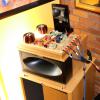
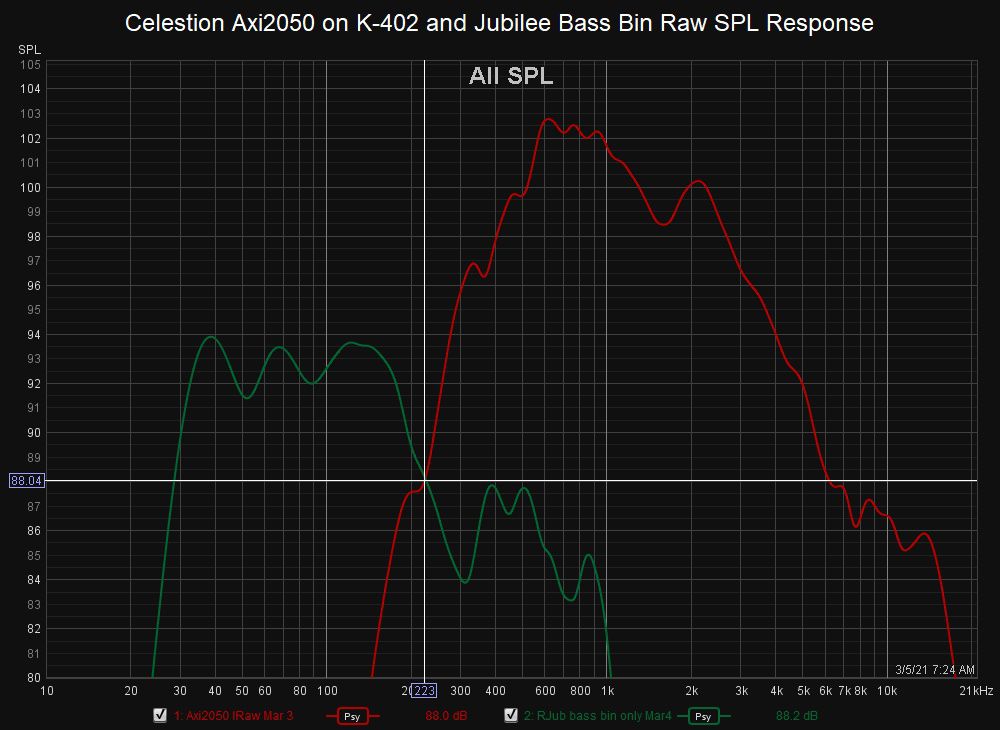

vs.TADTD-4002(Blue)onK-402Horn.jpg.f7069e07971adb83b8382a5f8ec1f1ce.jpg)
vs.TADTD-4002(Blue)onK-402Horn.jpg.15a611b6b168eaf6d88857fe4c38bb10.jpg)
vs.TADTD-4002(Blue)onK-402Horn.jpg.8702519df67f00968b593e14e8db4d45.jpg)
vs.TADTD-4002(Blue)onK-402Horn.jpg.ebd87c22c1eaf91642a13684a76dca65.jpg)
vsTAD4002(Blue)SPLResponsewithJubBassBin.jpg.292c8a635b5ed68aad17c5165f2432bf.jpg)
vsTAD4002(Blue)PhaseResponsewithJubBassBin.jpg.48ca5edff8806d7673867e5bab650b87.jpg)
vsTAD4002(Blue)StepResponsewithJubBassBin.jpg.620be54eba61ff93d2bcc9d0486df9de.jpg)


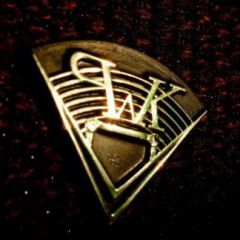


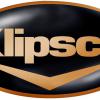


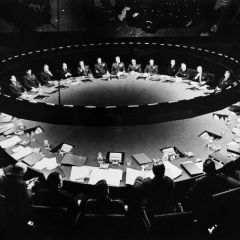


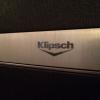
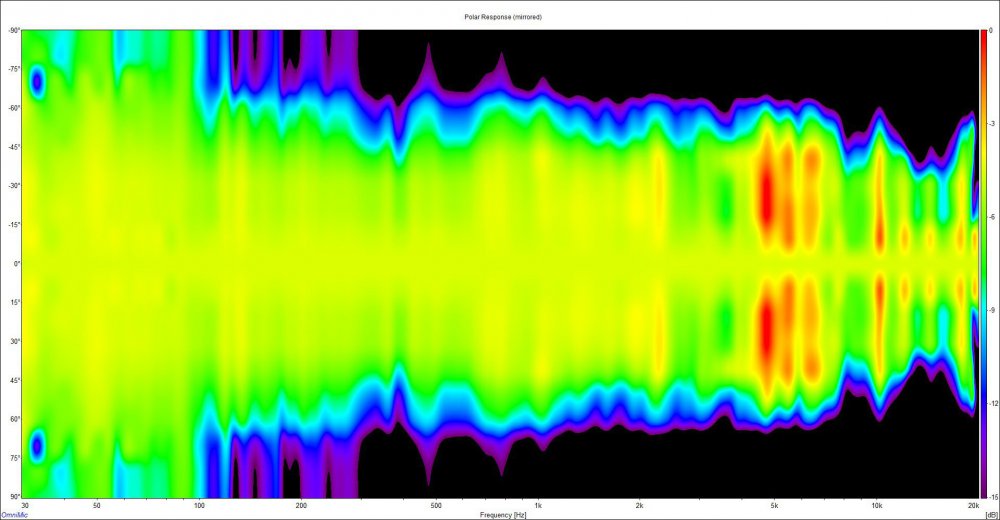


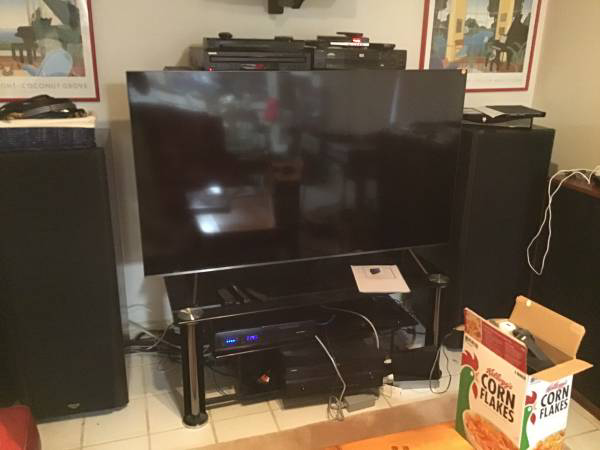







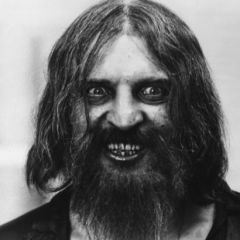
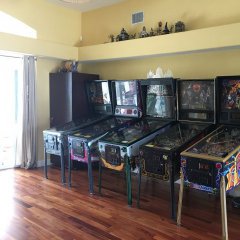
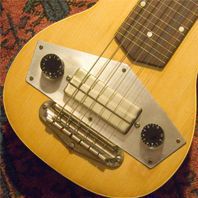

.thumb.jpg.968532f39ccb23a92701c217711519f3.jpg)
.thumb.jpg.3465db629f8be4d023623fdc095abf5a.jpg)